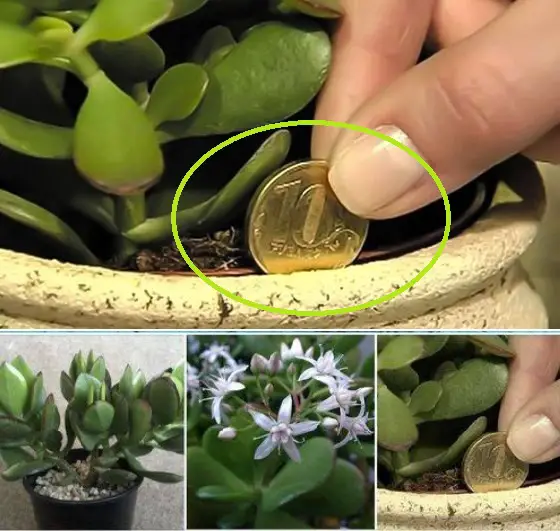In the realm of Feng Shui, the ancient Chinese art of harmonizing individuals with their environment, certain plants are revered for their ability to attract prosperity and positive energy. Among these, the Jade Plant (Crassula ovata) stands out as a symbol of wealth and good fortune. Understanding the significance of the Jade Plant and its optimal placement can enhance the flow of positive energy, or ‘Chi,’ within your home.
The Jade Plant: A Symbol of Wealth
The Jade Plant, also known as the Money Plant, is cherished in Feng Shui for its round, coin-shaped leaves, which symbolize wealth and prosperity. Its vibrant green foliage represents growth and renewal, aligning with the energy of abundance. Incorporating a Jade Plant into your living space is believed to attract financial success and good luck.
Optimal Placement According to Feng Shui Principles
The placement of the Jade Plant within your home is crucial to maximize its beneficial effects. According to Feng Shui, the southeastern corner of your home, known as the ‘Wealth Corner,’ is the ideal location for the Jade Plant. Positioning the plant in this area is believed to enhance financial luck and opportunities.
Alternatively, placing the Jade Plant near the entrance of your home or office can invite positive energy and prosperity into your space. This placement allows the plant to greet visitors and welcome abundance into your life.
Care and Maintenance for Optimal Growth
To ensure the Jade Plant thrives and continues to attract positive energy, proper care is essential:
- Light: Place the plant in bright, indirect sunlight. While it can tolerate low light conditions, optimal growth occurs with adequate light exposure.
- Watering: Water the plant when the top inch of soil feels dry. Overwatering can lead to root rot, so it’s important to allow the soil to dry out between waterings.
- Soil: Use well-draining soil to prevent water accumulation, which can harm the plant’s roots.
- Temperature: Maintain indoor temperatures between 65°F to 75°F (18°C to 24°C) for optimal growth.
Enhancing the Feng Shui Effect
To further amplify the positive energy associated with the Jade Plant:
- Use a Red Pot: Planting the Jade in a red pot can enhance its energy, as red symbolizes prosperity and good fortune in Feng Shui.
- Keep the Plant Healthy: A thriving plant reflects positive energy, so regular pruning and care are essential.
- Avoid Clutter: Ensure the area around the plant is free from clutter to allow the free flow of energy.
Conclusion
Incorporating a Jade Plant into your home not only adds aesthetic appeal but also aligns with Feng Shui principles to attract prosperity and good fortune. Proper placement and care of this symbolic plant can enhance the flow of positive energy and help create a harmonious environment.
The Science Behind the Jade Plant’s Popularity
Beyond its symbolic value in Feng Shui, the Jade Plant has practical benefits that make it a popular choice for households:
- Air Purification: Like many houseplants, the Jade Plant helps purify the air by absorbing carbon dioxide and releasing oxygen. This contributes to a healthier indoor environment.
- Low Maintenance: The Jade Plant’s succulent nature means it requires minimal care, making it perfect for those new to gardening or with busy lifestyles.
- Longevity: Jade Plants are known for their durability and long lifespan. When well-maintained, they can thrive for decades, becoming cherished family heirlooms.
- Aesthetic Appeal: With its thick, glossy leaves and tree-like structure, the Jade Plant adds an elegant and serene touch to any space.
Using the Jade Plant as a Gift
In many cultures, the Jade Plant is a popular housewarming or business gift. It symbolizes wishes for financial success, growth, and long-term stability. Whether given to friends, family, or colleagues, a well-presented Jade Plant conveys thoughtfulness and good intentions. To make the gift even more meaningful, consider pairing the plant with a red ribbon or pot to emphasize its prosperity-enhancing qualities.
Alternative Placements for Specific Goals
Feng Shui practitioners suggest different placements of the Jade Plant to achieve various objectives:
- For Career Growth: Place the Jade Plant in the northern area of your home or office to energize the career and life path sector.
- For Health and Well-Being: Position the plant in the eastern section to enhance vitality and family harmony.
- For Relationships: To improve relationships and attract positive connections, place the Jade Plant in the southwest corner of a room.
Troubleshooting Common Issues
While the Jade Plant is hardy, it can occasionally face challenges. Here’s how to address common problems:
- Yellowing Leaves: This is often a sign of overwatering. Allow the soil to dry out and adjust your watering schedule.
- Leggy Growth: Insufficient sunlight can cause the plant to grow tall and sparse. Move it to a brighter location.
- Pests: If you notice mealybugs or spider mites, gently wipe the leaves with a cotton swab dipped in rubbing alcohol.
- Root Rot: Ensure proper drainage by using a pot with holes and avoid waterlogged soil.
Cultural Significance of the Jade Plant
The Jade Plant’s association with prosperity is not limited to Feng Shui. Across cultures, it is viewed as a harbinger of wealth and luck. In African traditions, the plant is believed to attract rain and symbolize fertility, while in Western countries, its resilience and lush greenery make it a symbol of endurance and growth.
Final Thoughts
The Jade Plant is more than just a decorative houseplant—it’s a timeless symbol of prosperity, luck, and positive energy. Whether you’re looking to improve the energy flow in your home, attract financial success, or simply enjoy the benefits of a low-maintenance plant, the Jade Plant is a perfect choice.
By placing the plant thoughtfully and caring for it attentively, you can ensure it thrives and brings its symbolic blessings into your life. Whether as a gift or a centerpiece in your home, the Jade Plant embodies the perfect balance of beauty, meaning, and practicality—a true treasure for any space.

